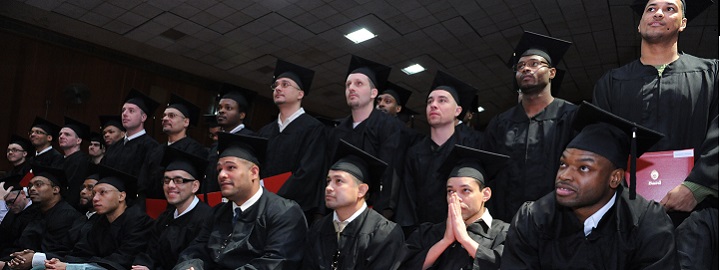Helping to Build a Road to Success for Once Incarcerated College Students
A program created last year at the Stanford Criminal Justice Center called Corrections to College CA has just released a toolkit to help encourage the state’s colleges and universities to develop strategies designed to help formerly incarcerated students succeed in the world of higher eduction.
The toolkit—which is also a joint project of Renewing Communities, a four-year initiative designed to build “a network of bridges from corrections to college in California”—is based on input from students, faculty, administrators and staff on campuses throughout the state, and is organized into three sections:
The first section is called Essential Program Elements and Services, and it basically outlines the nuts and bolts necessities for setting up a program to attract formerly incarcerated students, and then help them succeed once they are accepted at a college or university.
For instance, it gives college administrators such prosaic suggestions as making sure the program has a director or coordinator “who has personal experience with the criminal justice system.” In this section, the toolkit also advises that the program must be an “officially recognized campus program with a dedicated central campus location with meeting space, mailing address, and phone number.”
Section two discusses what the toolkit calls the Informal Strategies for Student Success, which includes helpful ideas like organizing an event that faculty and school administrators can attend in order to learn about the program, and to find out how they can help formerly incarcerated students succeed. The toolkit recommends including a panel of students who can talk about their experiences, needs and challenges.
And, finally, in section three formerly incarcerated students from all over the state who’ve already graduated from college tell what they think new students need to know to succeed.
Bottom Up and Top Down
This educational initiative is designed to bring formerly incarcerated people to college, but also to bring more college programs to prisons. The initiative’s organizers cite research that shows a 43% reduction in recidivism associated with education in custody, and 51% lower odds of recidivating for those prisoners enrolled in college programs.
With this in mind the Renewing Communities program has chosen—and funded—seven colleges for seven pilot programs with various California prisons.
Renewing Communities proponents believe that California’s “vast public higher education system” is well suited to “embrace ‘currently and formerly incarcerated students throughout the state, from incarceration to release and through degree attainment on the outside,” and in doing so can California can create a “sustainable” model for the nation.
In addition to the Stanford Criminal Justice Center, Renewing Communities is supported by The California Endowment, The California Wellness Foundation, Roy & Patricia Disney Family Foundation, The Ballmer Group, ECMC Foundation, the Ford Foundation, the Heising-Simons Foundation, The William and Flora Hewlett Foundation, The Andrew W. Mellon Foundation, Bank of America Charitable Foundation, the Rosenberg Foundation, and the Weingart Foundation.
The Restoration of Rights Project
And while we’re on the topic of the growing list of Americans who fall into the category of formerly incarcerated, a few years ago, National Association of Criminal Defense Lawyers (NACDL), launched a terrific on-line resource that provided state-by-state information about what each US jurisdiction was doing or not doing in the way of offering relief for the various forms of collateral damage of a criminal conviction—things like the loss of voting rights, or the requirement to check that much-hated box on employment applications.
This week, the Collateral Consequences Resource Center and its partner organizations, the National Association of Criminal Defense Lawyers, the National Legal Aid and Defender Association, and the National HIRE Network, have announced an updated and much expanded version Restoration of Rights Project, which you can find here.
(And go here if you want to check out how California is doing on these topics.)
Along with the jurisdictional info, a set of 50-state comparison charts shows national patterns in restoration laws and policies.
The project was created as a resource for defense lawyers, for courts, and for volunteer advocates trying to help people whose court-imposed sentences have triggered additional civil penalties. The creators also intend the data to help lawmakers interested in policy reform in the arena of reentry and reintegration of people with past convictions. In addition, the creators write, the project is intended as a research too for “the millions of Americans with a criminal record who are seeking to put their past behind them.”

